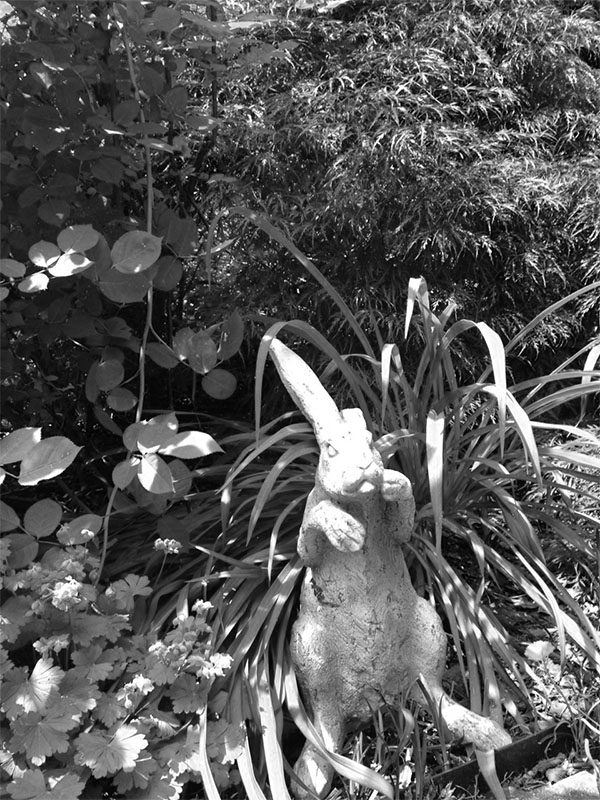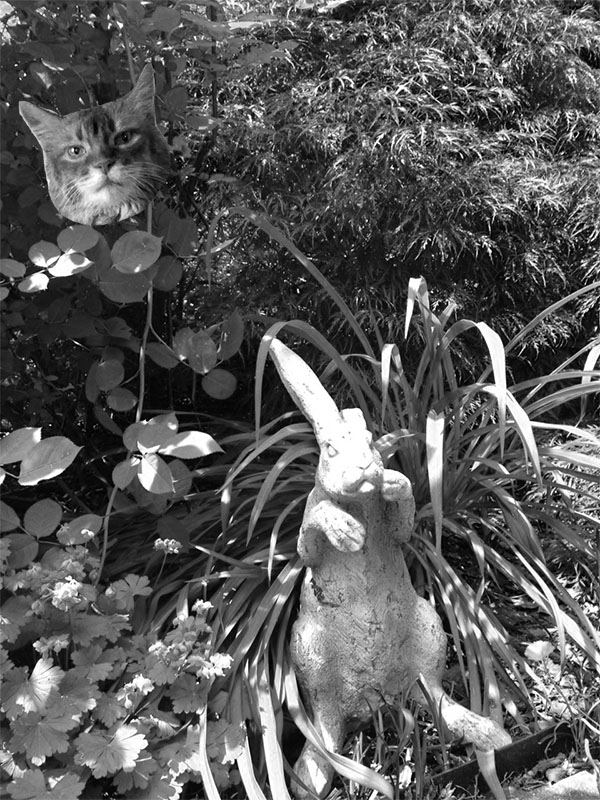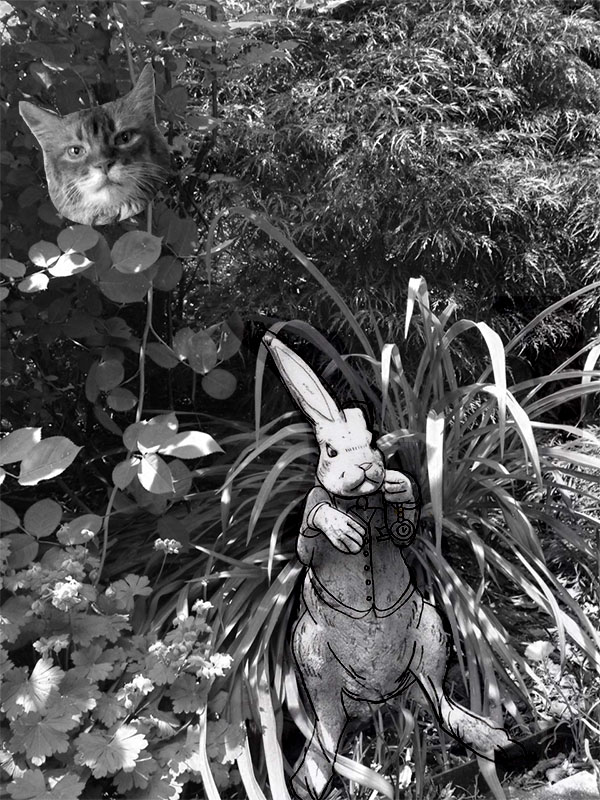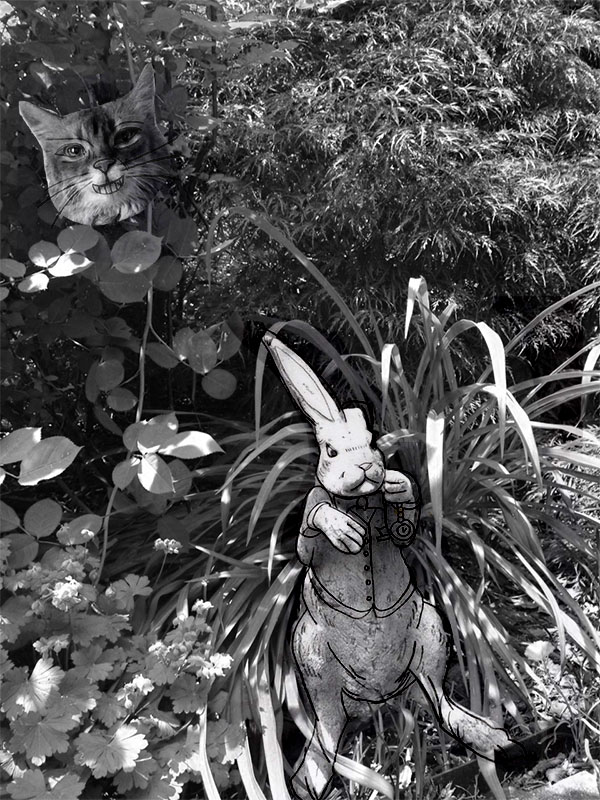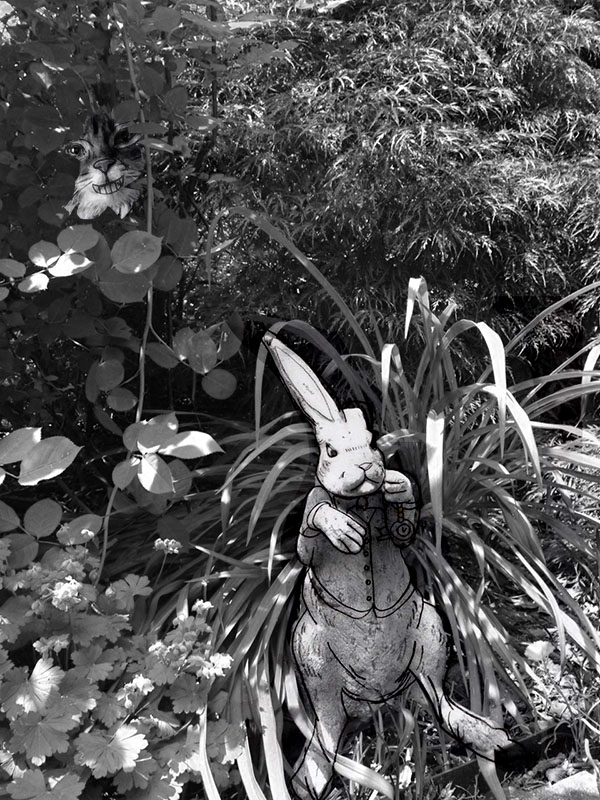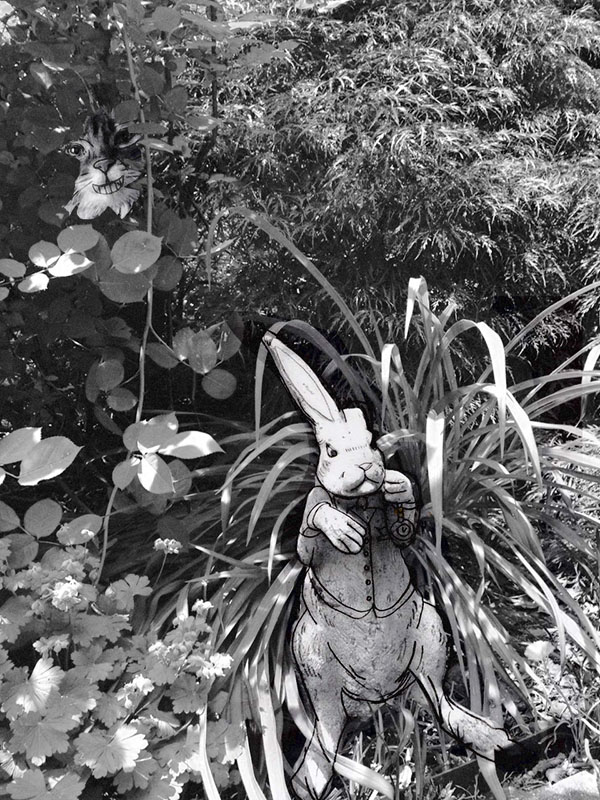EXT. After scaring away the small creatures of Wonderland with the mention of her cat, Alice is again alone. Unbeknownst to her, she is also journeying between mediums, moving from the complement of text and illustration to the captured "reality" of film and photography. She spots a familiar figure, the White Rabbit, although he is not quite as she remembers.
While the White Rabbit uses the name Mary Ann, he might as well say May Clark, the first actress to embody Alice in film in 1903. Simply creating Wonderland for a film audience, with its shifting perspectives and unlikely inhabitants, was a challenge for the early medium. The 1903 film was the first of many film adaptations of Alice, some faithful, others building a very different Wonderland. The restored version of the only remaining print shows Alice confronting a rabbit taller than herself, "shrinking" as the props change around her, and confronting a house cat glowing in a tree, the Cheshire Cat.
CUT TO: Charles Dodgson, photographing a young Alice Liddell dressed as a beggar maid in what would become one of his best-known images. The year is 1858, and Alice is not yet "Alice" nor is Dodgson "Lewis Carroll." And of course, the young Alice is no beggar—the image is a staged reality, playing a part. (Carroll's photography is well-documented in the exhibit catalogue for Dreaming in Pictures: The Photography of Lewis Carroll.)
This relationship to realism (as played out in both photography and film) again brings Alice against the rules of her medium: the image uses "truthful" things to create the decided untruths on which Wonderland is founded (20). Such a dichotomy is an oversimplification, but it is a gateway to considering the distinction between the image and the photograph: Ron Burnett argues that
the image and photograph must be seen as dramatically different.... The idea that the photo can capture a moment in time happens to be a specific ideological statement born out of, and sustained by Western cultural conceptions of representation. This has as much to do with notions of the observer and the observed as it does with the presumed relationship of an apparatus to reality. (56)
Lewis Carroll's relationship with text, image, and photograph as mediums (all in which he expressed varius mediations of his "Alice") particularly complicates readings of his photographs.
May Clark brings Alice a new physical identity, but she would quickly be followed by Gladys Hulette (1910) and Viola Savoy (1915). With each iteration, the advancement of technology would appear to bring more "truthfulness" to Alice... by moving away from the real.
